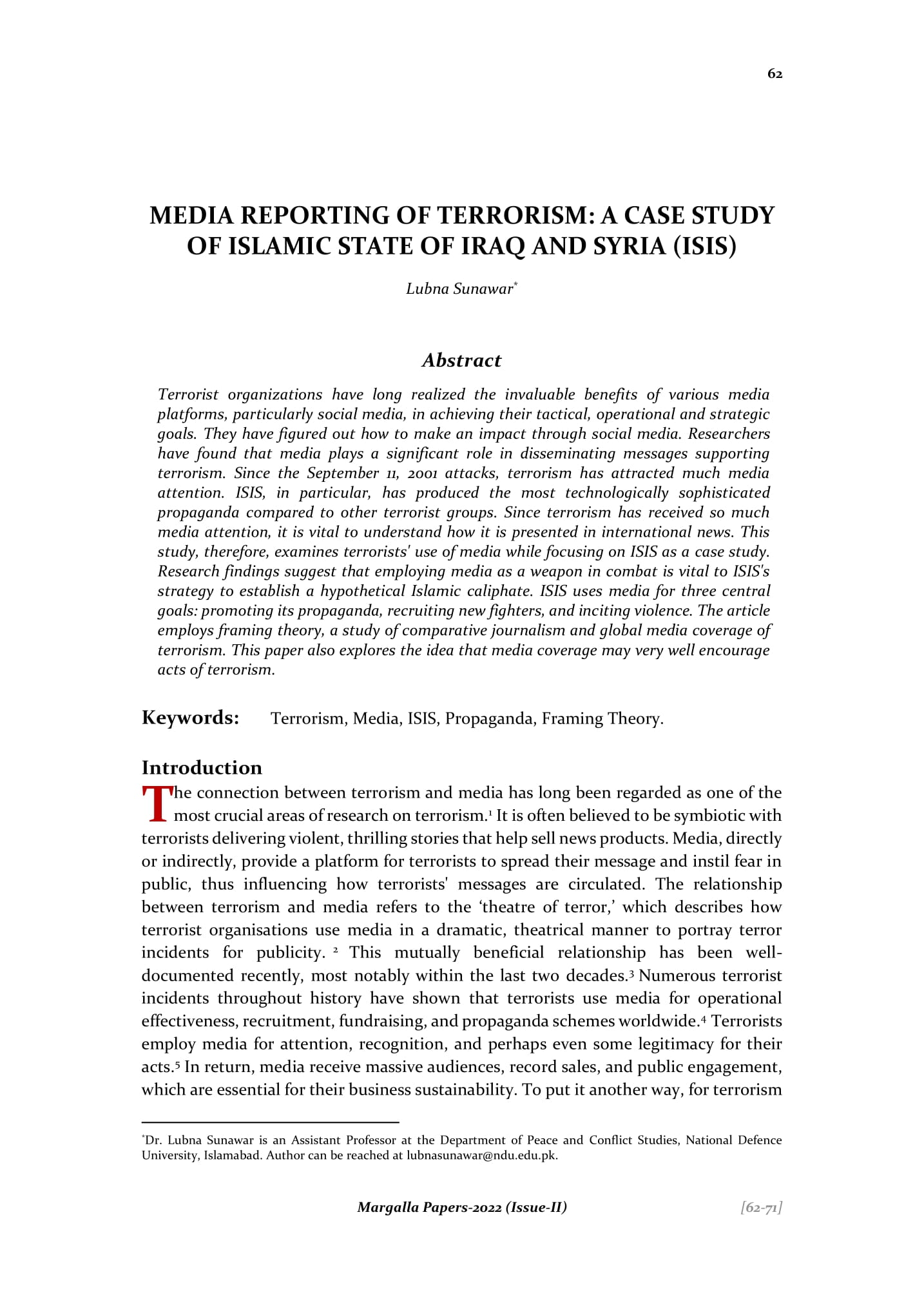MEDIA REPORTING OF TERRORISM: A CASE STUDY OF ISLAMIC STATE OF IRAQ AND SYRIA (ISIS)
DOI:
https://doi.org/10.54690/margallapapers.26.2.114Keywords:
Terrorism, Media, ISIS, Propaganda, Framing TheoryAbstract
Terrorist organizations have long realized the invaluable benefits of various media platforms, particularly social media, in achieving their tactical, operational and strategic goals. They have figured out how to make an impact through social media. Researchers have found that media plays a significant role in disseminating messages supporting terrorism. Since the September 11, 2001 attacks, terrorism has attracted much media attention. ISIS, in particular, has produced the most technologically sophisticated propaganda compared to other terrorist groups. Since terrorism has received so much media attention, it is vital to understand how it is presented in international news. This study, therefore, examines terrorists' use of media while focusing on ISIS as a case study. Research findings suggest that employing media as a weapon in combat is vital to ISIS's strategy to establish a hypothetical Islamic caliphate. ISIS uses media for three central goals: promoting its propaganda, recruiting new fighters, and inciting violence. The article employs framing theory, a study of comparative journalism and global media coverage of terrorism. This paper also explores the idea that media coverage may very well encourage acts of terrorism.
Bibliography Entry
Sunawar, Lubna. 2022. "Media Reporting of Terrorism: A Case Study of Islamic State of Iraq and Syria (ISIS)." Margalla Papers 26 (2): 62-71.
References
David L. Paletz, ed. (1996). Political Communication in Action. States, Institutions, Movements, Audiences. Cresskill. NJ: Hampton Press. 55–72.
A. Shoshani and M. Slone. (2008). “The Drama of Media Coverage of Terrorism: Emotional and Attitudinal Impact on the Audience.” Studies in Conflict and Terrorism 31(7). 627-640.
Dominic Rohner and Bruno S. Frey. (2007). “Blood and Ink! The common-Interest-Game between Terrorists and the Media.” Public Choice. 133.
Brigitte L. Nacos. (2006). “Terrorism/Counterterrorism and Media in the Age of Global Communication.” United Nations University Global Seminar.
B. Hoffman. (2003). “Al Qaeda, Trends in Terrorism, and Future Potentialities: An Assessment.” Studies in Conflict & Terrorism, 26(6). 429-442.
..............................(contd.)

Downloads
Published
How to Cite
Issue
Section
License
Copyright (c) 2023 Lubna Sunawar

This work is licensed under a Creative Commons Attribution-NonCommercial 4.0 International License.












